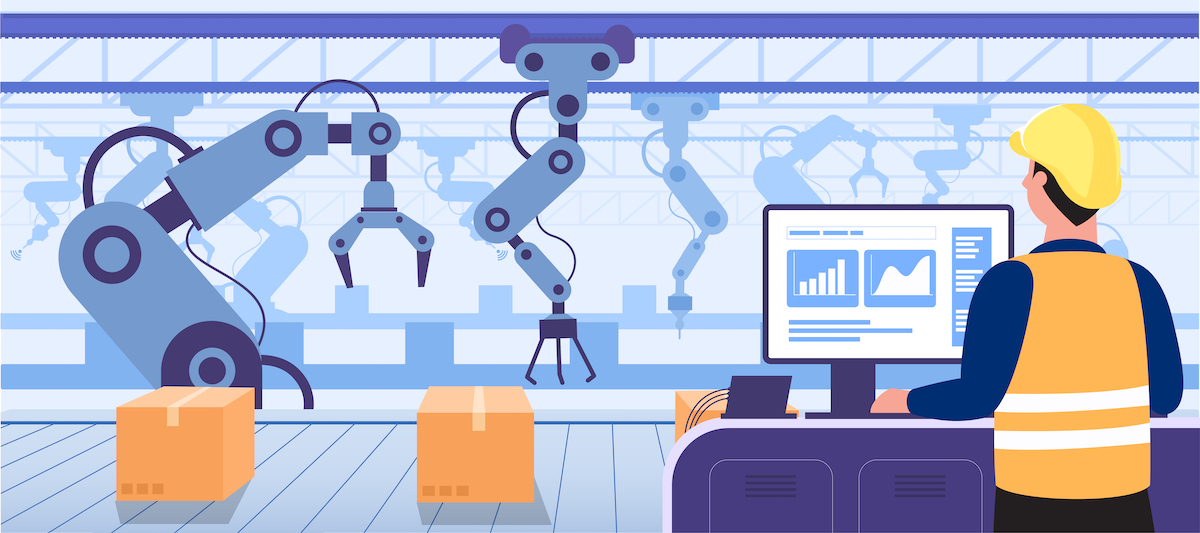CEO Insights: As plants get smarter, manufacturers need to “watch the robots”
Using digitization to improve how things get done has boosted revenue by reducing downtime in connected factories. The ability to immediately analyze and respond to process upsets, and the possibility to more accurately conduct scheduled maintenance help manufacturers to save money and to increase productivity. As more plants become smarter, manufacturers need a solution “to watch the robots.” In today’s interview, Norman Fast, CEO of Industrial Video & Control Co. will explain how IIoT is changing industrial network video solutions and what are the current demands.
Lucian Fogoros: How did IVCCO come to produce video solutions for industrial applications?
Norman Fast: We began in 2001. From day one, we were focusing on IP video – developing both the hardware and the software necessary to record, play back, and control the IP video cameras we were developing. Our development has always been driven by our customers who had a need – we listened to them, and this pulled us onto the factory floor, into remote monitoring of pipelines and other infrastructure, and specialized industrial cameras. We’re different from a lot of our competitors in that we began with industrial applications and have always focused on that. Our engineers have a long background in industrial process control and SCADA, and we have kept them focused on industrial applications.
Lucian Fogoros: Looking at today’s technology, what do you see as driving changes now versus five, 10, 15 years ago? What changed for your organization?
Norman Fast: We are seeing three big drivers. The first is the rapidly decreasing cost and size of cameras. The number of cameras deployed will grow dramatically. Five years ago, where we were putting in half a dozen cameras in to provide an overview of what was going on in the warehouse or factory floor – today we are putting 4 or 5 times as many on the ends of forklift trucks and inside industrial machinery. Wherever an operator doesn’t have exactly the view they need, we are going to be placing cameras. This will just keep growing.
The second big driver is increasing intelligence in cameras. More and more video analytics and storage are moving to the edge – inside the camera. Customers keep finding new opportunities to have the cameras provide not only images but also actionable data. For us, this is a great opportunity, and we are pushing forward with specialized analytics for industrial applications.
The third big change is the recognition that video cameras with intelligence are becoming just another sensor – these can be in the visible range or other parts of the spectrum such as thermal infrared cameras. Video cameras are becoming a core component of the IIoT – and we are responding to this in our software-by incorporating video as another data source integrated into process control systems.
Lucian Fogoros: How do you convince customers that they need industrial network video solutions? What value does it offer manufacturers?
Norman Fast: Our sales effort has to be driven by increasing efficiency or reducing cost. We see the biggest payback for customers in reducing downtime mainly through forensic analysis of failures, the ability to immediately analyze and respond to process upsets, and the possibility to more accurately conduct scheduled maintenance. As an example, we have a steel mill that is saving hundreds of thousand of dollars a year by using our thermal cameras and analytic software to monitor their ladles for hot spots that indicate potential breakout. This allows them to defer and extend their scheduled maintenance. Another big payback is using video to reduce the number of workers on the plant floor. This not only has cost savings but also reduces worker injuries.
Lucian Fogoros: Can you comment on what excites you the most around the current trends in the industry 4.0?
Norman Fast: There are a couple of trends that we are excited about. Most importantly is the demand for combining video and data capture, analytics, and the development of advanced sensors including those beyond the visible wavelengths – which plays into our strengths. Beyond that, we are starting to get requests for video systems to “watch the robots” – a fascinating development. As plants become more connected, they will need even more cameras to watch the automated production processes, and we want to be the ones they call to watch the robots.



